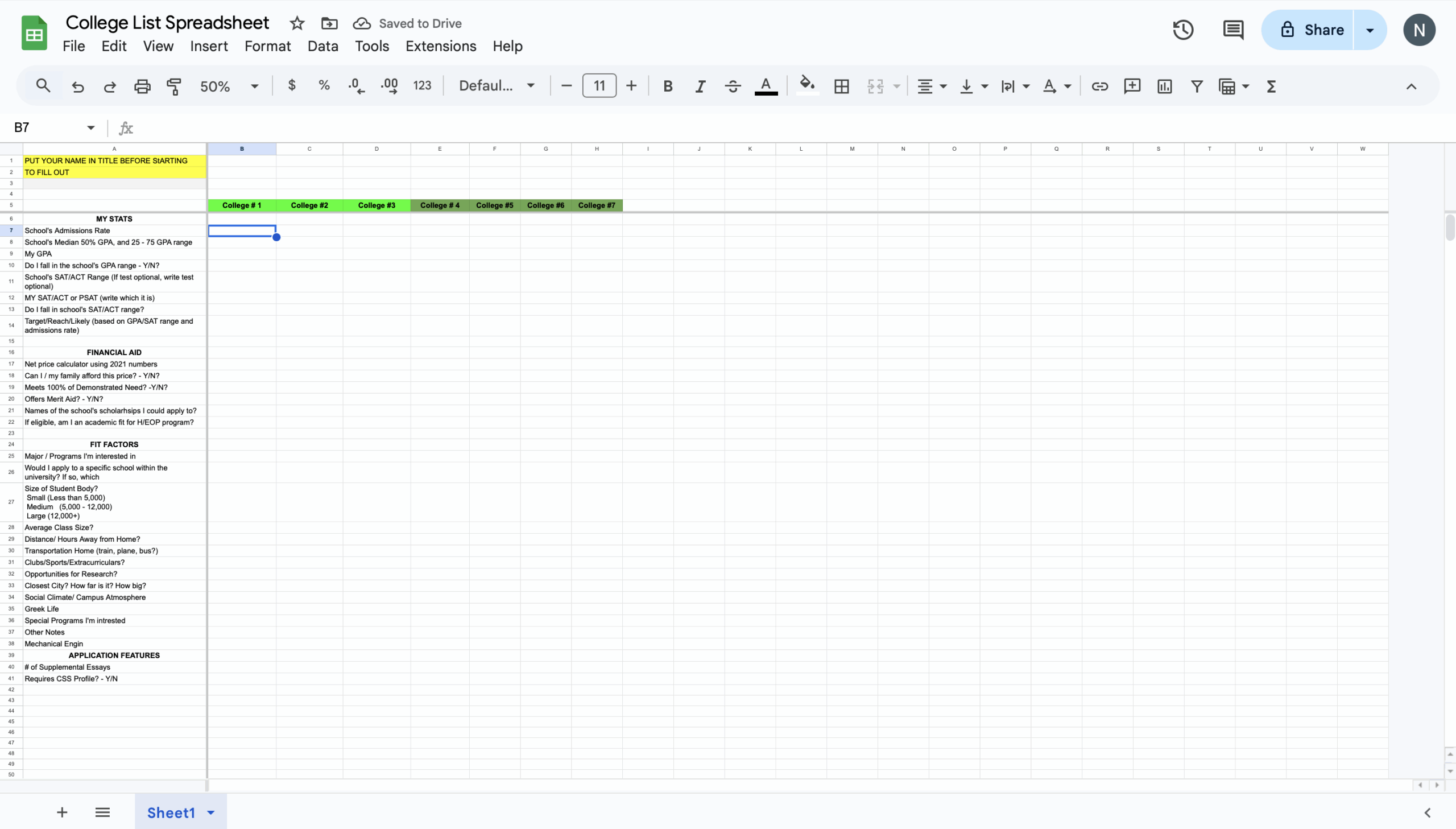As most people know, applying for anything can be stressful. There are usually many personal documents you need to gather to complete an application. Deadlines often overlap with other major events in your life, and sometimes you’re applying to so many places that you don’t even know where to start. It can be overwhelming. If applying to anything can be stressful, college applications are no exception. When applying to college, you’re applying for a place where you’ll spend the next few years—so there’s a lot to consider. Let me break down what helped me stay organized and reduce my stress during the college application process.
How to Stay Organized?
In my opinion, when applying to college, it’s best to use a spreadsheet to organize all the colleges you’re applying to—or might apply to. I had columns for each college and arranged them by the ones I was most interested in first, followed by others I liked but not as much as my top three. Deciding your top schools can also be made easier through a spreadsheet because it helps organize your thoughts and visually shows why a particular school might be right for you.
On my spreadsheet, I included a section comparing my personal stats to what each school typically looked for in accepted students. What does this mean? I looked up each school’s admission rate, average SAT/ACT scores, whether they were test-optional, and their average GPA range. Having this information helped me decide if a school was a match for my current standing, a reach if my GPA or scores didn’t quite align, or a safety school where I had a strong chance of getting accepted. This made it easier to decide which applications would take more time and energy and which would be less stressful to complete.
I also had a financial aid section that broke down each school’s estimated support for me. I used the school’s net price calculator to estimate how much aid I might receive, which helped me determine if I could afford to attend. This section can help you eliminate schools that aren’t financially realistic for you or your family.
Once I covered all the technical parts, I added categories that focused on the factors most important to my college experience—student life, location, and academics. In these sections, I listed what I liked about each college. For example, I wrote down at least three majors each school offered that interested me, so I knew I’d have good options if I decided to change majors. I also included clubs I’d want to join, scholarships or programs I could apply for, and resources available to students. The more I could fill these sections with things I liked, the more I knew a school was a good fit for me.
My final section covered whether the school required the CSS Profile for financial aid and how many supplemental essays the application included. This helped me see which applications would take longer to complete since some had more parts. It also helped me plan the order I needed to complete my applications—especially considering whether I was applying Early Decision, Early Action, or Regular Decision, since each has different deadlines.

How to Manage Deadlines?
When it comes to deadlines, it’s best to mark them on a calendar—either a physical one or on your phone. This helps you visualize what needs to be done and when. When I was applying to college, I started with financial aid because gathering all the documents for those forms took time. Once everything was ready, I began working on the parts of the college application that were required for every school I applied to.
That started with the Common App, which includes your personal statement and recommendation letters. In my opinion, the best way to handle this part is to start early since each piece is important. Knowing who to ask for a recommendation depends on who knows you best and can speak to your character and abilities as a student. Your personal statement will take multiple drafts to perfect, but it should tell the school who you are as a person and what experience(s) have shaped you.
These tasks need to be paced wisely to meet each deadline. I had college counselors and advisors who helped me manage my time, but if you don’t have that, setting small goals can really help. For example, one goal might be deciding who to ask for recommendation letters; another could be brainstorming topics for your personal statement. These mini goals keep you on track to finish your applications on time while still balancing your schoolwork. Having smaller goals makes the entire process more manageable and less stressful.
What to do About Essays?
Lastly, let’s talk about supplemental essays—the additional essays some colleges require. These can feel frustrating because you’ve already written your personal statement, but supplemental essays actually give schools more insight into who you are. They also give you space to explain why a specific college is the right fit for you.
Even though I understood why these essays were important, they were still exhausting to write. What helped me was tackling each school’s essays separately. I copied each school’s essay prompts into a separate document organized by school. I started with the schools I was most passionate about or applying to early, so I could finish them ahead of their deadlines. These were usually easier to write because I genuinely liked those schools.
For schools I wasn’t as excited about, I broke down the essays section by section and focused on writing first, not worrying about the word count until later. I found that writing freely made it easier to finish the essay and then cut down words afterward, since I already knew what I wanted to say.
Final Thoughts
The best advice I can give is to find an organizational method that helps you track what you like about each school and keep up with all the important deadlines. My main advice is not to wait until the last minute—the best applications are the ones that aren’t rushed and are thoughtfully put together. Submit your application when you feel it’s complete, includes all the required parts, and truly represents who you are. Most importantly, be yourself and take it one day at a time.

